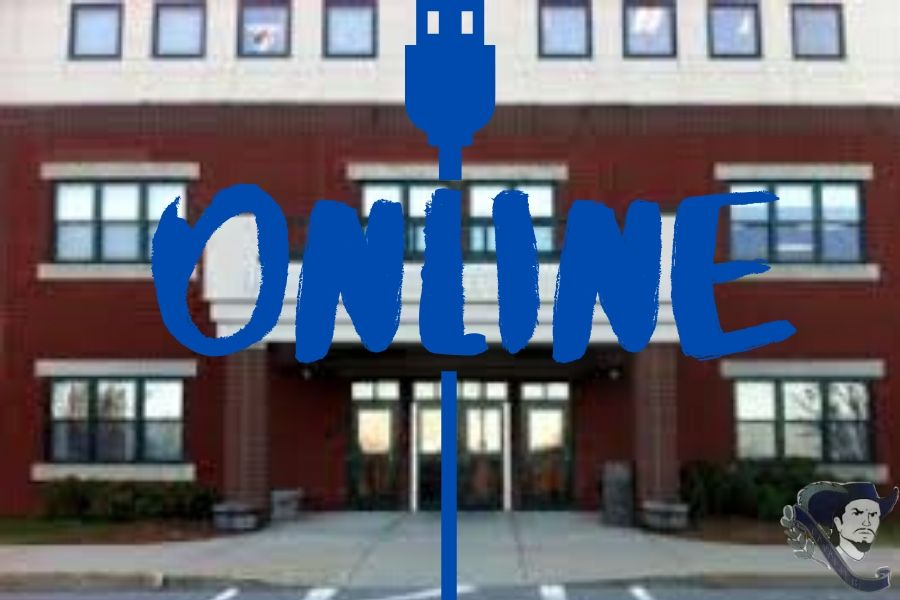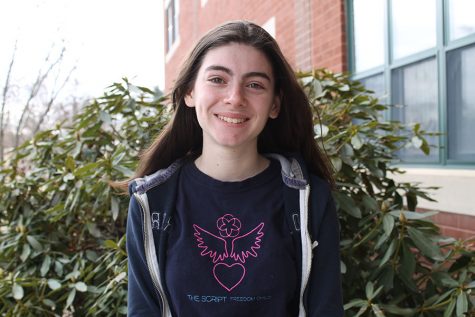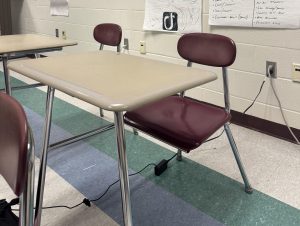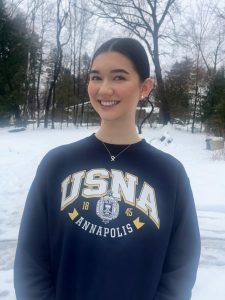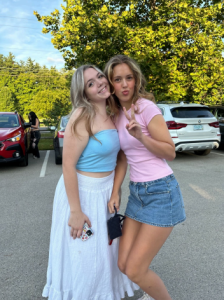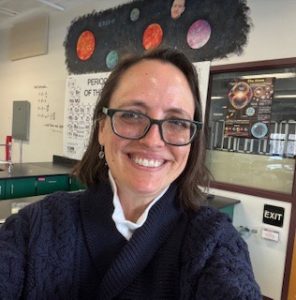Remote learning: three days in
Last week Hollis-Brookline transition to remote learning due to the spread of COVID-19. This has posed new challenges and learning experiences for students and staff alike. “The first few days were a little shaky. Everyone is learning even the teachers so it’s getting done just slowly,” said Paige Boggis ’20.
March 23, 2020
Friday, March 20, exactly one week after the announcement that SAU41 would transition to remote learning until April 3 due to the spread of COVID-19, marked the end of the first week of online learning. Teachers have utilized a variety of tools, from Google Classroom to Zoom, to maintain their classroom atmosphere and teach from afar. So, how did it go?
According to Alex Hill ‘22, the three day digital work-week went fairly well. “The first few days of school have been pretty productive for me, though it’s been awfully weird. It was odd to wake up at my regular time on Wednesday, and eat breakfast, just to go back upstairs and get on a computer instead of getting on a bus,” said Hill. Last week has served as a crucial adjustment period for students, staff and families as everyone attempted to adapt to this new lifestyle.
On both Monday, March 16, and Tuesday, March 17, staff digitized their lesson plans and reevaluated their classroom expectations. Wednesday through Friday served as both school days and trial days as teachers and students figured out the new system together.
“During the first day of online learning, I personally got a lot of assignments, and spent a long time working on them. I think it will take a little while for the students as well as the teachers to get used to this process and gauge how much work they should assign,” said Leila Caplan ‘20.
Caplan is experienced with online learning, as she has taken four VLACS classes throughout her high school career, but the transition for her was noticeable as well. “Compared to VLACS, Google Classroom work is a bit different. The due dates for our school are more strict, and the assignments require a little bit more work to complete. In terms of VLACS, the assignments are tailored to the lesson that we just learned, whereas the teachers at H.B. are varying the types of assignments they are posting. I think this is nice because we aren’t doing the same thing everyday,” said Caplan.
Over the course of the past week, the high-school has sent out six email updates to students and their families to keep the community informed at every step of the process. Administration has emphasized a consistent schedule as a key tool for student success. Of course, with the chance to work from home, students can’t be constantly monitored and reminded to stay on task, hence the importance of a schedule.
For Hill, to-do lists have worked wonders, but her initial plan didn’t pan out as expected: “[my] first thought was to follow the school’s bell schedule… I intended to follow my regular schedule to cling on to some form of “normal.’” Instead she found that finding a sleep schedule that worked for her and prioritizing her work in blocks by deadline was her ticket to success.
“As of now, I’m managing my time on a class-by-class basis, organizing my day around the deadlines I need to meet. I plan to get up around 8 o’clock every day to spend the morning on the tasks that take “priority”… [and] taking breaks every hour and fifteen minutes… My plan is incredibly flexible, and I’ve been thriving on it,” said Hill.
One positive of this new system is that each student can create a personal learning plan to enhance their academic success. For some students, the break from the standard seven-hour school day is a blessing. “I actually like it because I have A.D.D. so I am able to get up when I please and do some work and then take a break and go back to work and/or work late at night or at my own pace… Honestly I’m just writing lists and doing what’s on them,” said Paige Boggis ‘20.
In addition to handing out Chromebooks and providing remote resources, the administration has been actively seeking student feedback. The district is working hard to find the proper tools and options to maximize the student’s ability to learn. That said, the most prominently used resources so far are Zoom, a free group telecommuting platform, and Google Classroom’s various features.
Digitizing lessons and developing these remote learning tools for student use hasn’t been easy for the Hollis-Brookline staff. Physics teacher, Adam Wilcox, has worked with several resources, including Zoom, Google Classroom and video lessons, to keep his physics classes on track. “The biggest thing that I think I’ve been faced with is the difficulty with actually doing remote teaching. Students can hand in work just fine, but instruction is proving difficult. It’s so much more effective having a face to face interaction with students, whether it be about personal things or academic things, than it is over text [or] Zoom,” said Wilcox.
Despite the inability to teach his classes in person or do physical demonstrations to display the physics concepts, Wilcox has a positive outlook on the school’s progress so far. “Students have been flexible, administration has been supportive, and I’ve learned some really useful strategies in the first few days. Trial and error is the way to go, as it is with most things,” said Wilcox.
Another challenge both students and staff alike are actively facing is social distancing. A school day regularly consists of multiple forms of social interaction, ranging from in class discussions to lunch bunches. With the CDC’s suggestion for the public to practice social distancing measures in order to reduce the transmission of COVID-19, feelings of loneliness are beginning to set in.
But, thanks to today’s technology, people are luckily not cut off completely from the world. “The best thing that we can do during the COVID-19 pandemic is become homebodies. We are lucky enough to live in a time where social interaction is not limited to the physical world – you can literally distance yourself from people while still chatting with friends through social media/texting. It’s not the same, but it’s the necessary thing to do,” said Hill.
As Hollis-Brookline High School moves into the first full week of online learning, communication is key. Everyone is in this together to make remote learning as enjoyable, streamlined, and productive as possible.




